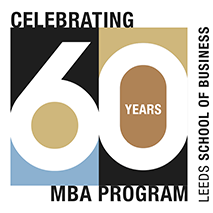The Remaking of Business Education Post-COVID-19
B-school will never look the same.
In the years leading up to coronavirus outbreak, business schools faced their fair share of challenges. MBA applications were down at many schools, and some questioned the value of two-year MBA programs that pulled people out of the workforce during a thriving economy.
Then the pandemic hit, causing the most dramatic disruption in the history of higher education. COVID-19 forced us to reassess the traditional business school experience. It turned our teaching model on its head, revamped curricula and challenged how we do admissions.
Some educators believe we are entering a decade-long remake of business education. If so, what will business school look like post-COVID-19?
Here are a few predictions.
Course delivery will transform
Virtual learning won’t take over in-person classes in most cases. But going forward, business schools have no choice but to embrace remote learning and offer more of it. These adaptations will need to be made while predicting tuition revenues, which is also more challenging. Unfortunately, this means that schools that are already struggling financially to survive might not make it.
Instructors will have to continue to learn how to maximize the potential of new technology, balancing remote instruction with in-person experiences. Successful faculty will develop engaging virtual classes with synchronous activities that activate students’ critical thinking and analytical skills.
Meanwhile, we will need to find new ways to help students reap the benefits of a traditional in-person business education—building a network, finding a job, connecting with a mentor and gaining funding for a startup. Accessing these elements of a business school education flexibly—either in person or virtually—will become key. New technologies that are emerging will allow for more natural, unstilted interactions between instructors and students, potential employers and job seekers, and classmates.
International students will decline
U.S. immigration policies had already begun to curb interest from international students before COVID-19, but now there’s the added risk of traveling and crossing borders. The convergence of these factors could change the makeup of future classes, shifting them to look more like they did 20 years ago when there were fewer international students.
Despite current challenges, there is reason to hope that the development of an effective vaccine and greater therapeutics can together help to reverse this trend. Additionally, immigration policies may receive renewed attention in the wake of this year’s elections.
Curricula will be revamped
Business schools are overhauling curricula and the student experience to meet the demand for new insights and skills that the post-COVID-19 world will require.
Shortly after the coronavirus reached the U.S., schools began launching courses, seminars and workshops on leadership in a time of crisis—exploring risk management, what strong leadership in a pandemic looks like, and whether conventional leadership approaches will work at a time like this.
Students are showing fresh interest in economic sectors the coronavirus has impacted, such as life sciences and healthcare management. They want to know more about how vaccines are developed and brought to market, showing the same kind of excitement as in the past for financial derivatives.
Additionally, courses on supply chain management are in greater demand, with special interest in topics related to reducing the risk of disruption, managing drug supply scarcity, diversify sourcing, and finding an equilibrium between efficiency and resilience.
Future curricula will continue to focus on the wider societal demands on business such as climate change and diversity—a fundamental shift already underway but elevated by COVID-19.
Admissions will meet challenges and opportunities
A silver lining of the pandemic may be the opportunity to rethink how we do things, and admissions is one of them.
University programs had begun to reconsider testing requirements in recent years, and the pandemic is accelerating this trend. After testing centers shut down last spring, many graduate business programs waived the GMAT requirement and plan to waive it again next year. Meanwhile, more and more undergraduate business programs have made the SAT/ACT optional. Time will tell if these changes become permanent.
Also, for the next few years, it will be very difficult to compare one student’s grades to another’s, given the uneven response of schools to the pandemic, disparities in internet accessibility needed for remote learning, and shifts in familial responsibilities. We will need to come up with ways to consider an applicant’s grades in context and weigh them accordingly.
New areas of assessment will begin to emerge. Soft skills and attributes including self-awareness, curiosity, diligence, social awareness, integrity and ethics are correlated with high engagement in college, which is a strong predictor of future career success. Business schools will create new ways to measure these aptitudes and integrate them into the admissions process. Tactics might take the form of short online interviews, video prompts, or evaluation of samples of writing, music and art.
As business schools develop students to become resilient leaders who can effectively manage change during uncertain and unprecedented times, we need to lead by example.
With countless uncertainties before us, the pandemic provides an opportunity to reimagine business education and make changes to ensure that we are preparing our students to positively transform the future of business.







